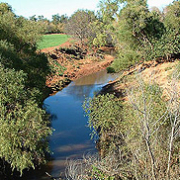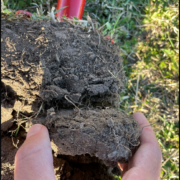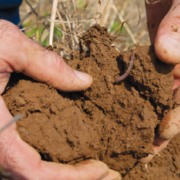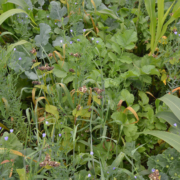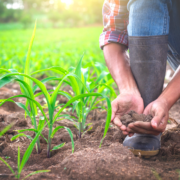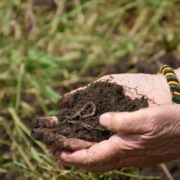Exploring Soil Organic Matter
 Print This Post
Print This Post
By Nina Prater, NCAT Sustainable Agriculture Specialist
Most people in the world of agriculture have heard of soil humus and have a general idea of what it is – a somewhat recalcitrant portion of organic matter that gives soil that nice dark color. But it turns out that the picture is much more complex than that. In a recent podcast episode that I recorded with Dr. Johannes Lehmann of Cornell University, he talks about why we should lay aside the idea of humus and humification and look with fresh eyes at what’s really going on in the soil.
To provide a little background: humus as a category of soil organic matter came about because early soil scientists used an alkaline solution to separate the organic matter from the mineral portion of the soil, and in doing so, they created a homogenous substance that they called humus. But what they created in the lab doesn’t actually exist in the soil.
Let’s use a more familiar ecosystem as an analogy. Say you took a forest ecosystem and put all the organic matter that was present there into a giant blender. The trees, the fungi, the deer, the birds, the moss, the vines – it all goes into a blender, and what comes out on the other side is a homogenized mass of organic matter with no differentiation between deer and chickadee, or morel mushroom and oak. Think about how much complexity is lost when you look at the organic matter of an ecosystem in such a simplified way! You can’t possibly begin to understand a forest if you study it like that. Laying to rest the concept of humus and instead embracing the diversity that actually exists in the soil opens up so much scope for exploration and understanding.
Dr. Lehmann and I talked about this and much more in our conversation. This is an exciting time in the world of soil science, with new technologies making research possible that never was before. If you have seen pictures of outer space that were taken with the new James Webb telescope, imagine that kind of clarity, only on a microscopic-scale in the soil. The complexities that will be revealed will surely help us understand soil more comprehensively, and in turn will help us refine best practices and find better ways to steward our soils in the future.
I hope you’ll enjoy listening to this conversation as much as I enjoyed having it.
Related ATTRA Resources:
Episode 326: Exploring Soil Organic Matter with Dr. Johannes Lehmann
Managing Soil for Water: How Five Principles of Soil Health Support Water Infiltration and Storage
This blog is produced by the National Center for Appropriate Technology through the ATTRA Sustainable Agriculture program, under a cooperative agreement with USDA Rural Development. ATTRA.NCAT.ORG.


